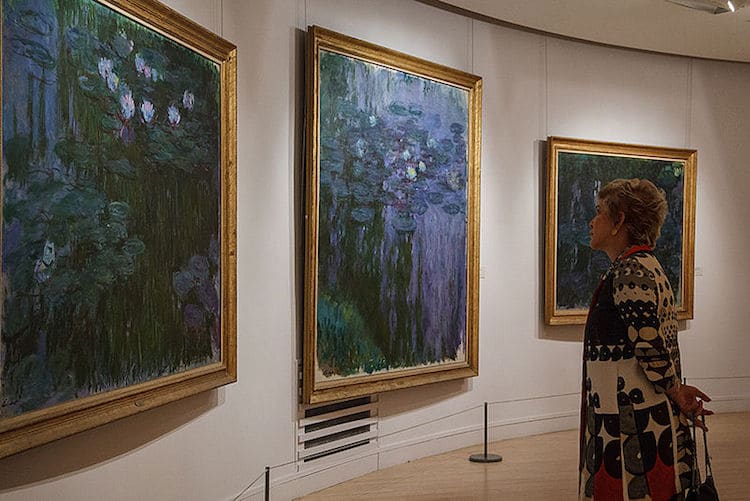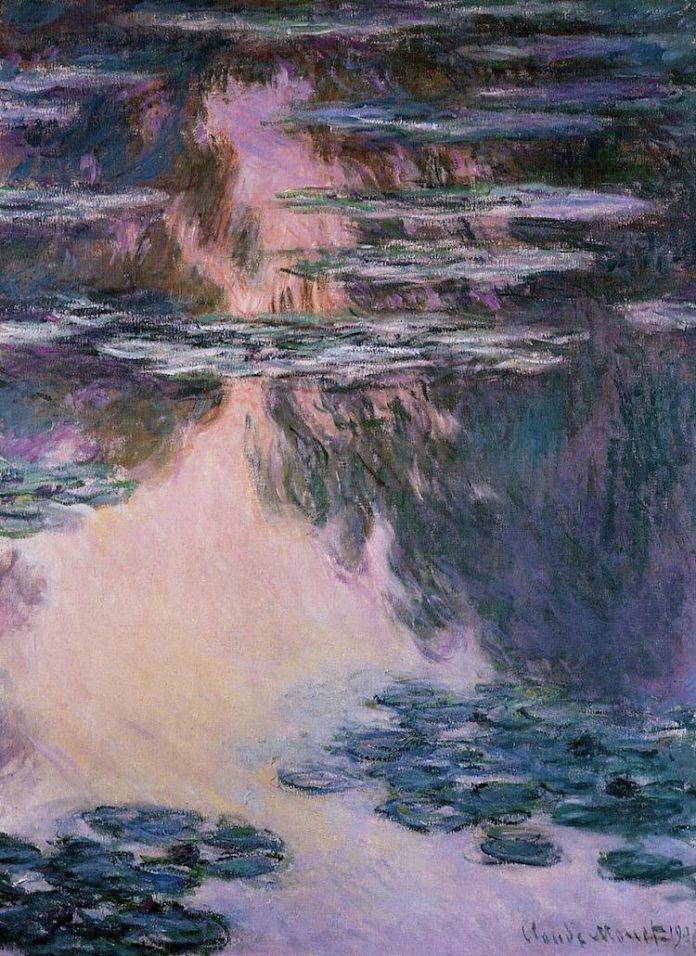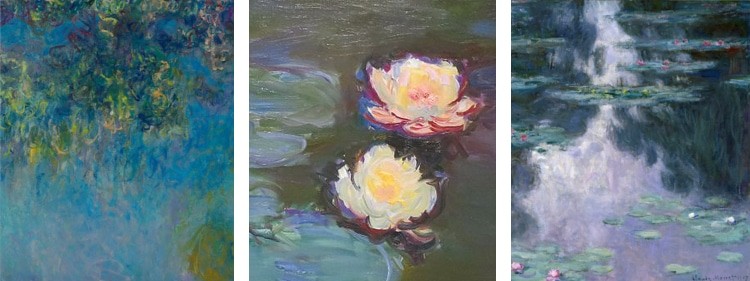
As the primary pioneer of Impressionism and a Modern Art master, Claude Monet is known for his distinctive style and iconic oeuvre. With an interest in capturing the fleeting effects of light on his subjects, the French artist often opted to paint en plein air—or “outside”—in his picturesque garden. Renowned for its Japanese influences, this manicured plot featured weeping willow trees, seasonal flowers, and, most famously, a network of water lilies.
For 30 years, the aging artist would focus on the floating flora, culminating in Les Nymphéas(“The Water Lilies”), a series of around 250 large-scale oil paintings. Today, these pieces are among his most well-known work, and are showcased in museums, galleries, and collections around the world.

Here, he surrounded himself with beauty, as evident in his home’s sunny interiors, the collection of Japanese woodblock prints that hung on his walls, and the oriental-inspired gardens he constructed steps from his front door—a colorful creation he famously called his “most beautiful masterpiece.”
At the center of this “masterpiece” is a man-made pond that is framed by flowers and adorned with a Japanese bridge. This pool quickly became one of Monet’s favorite subjects, with its whimsical water lily covering consistently stealing the show.
The Water Lilies Series
Monet‘s depictions of the aquatic flowering plants capture artistic impressions of his beloved backyard. Emphasizing the effects of light, these paintings are rendered in a rich color palette ranging from pastel pinks and baby blues to deep purples and bright greens.

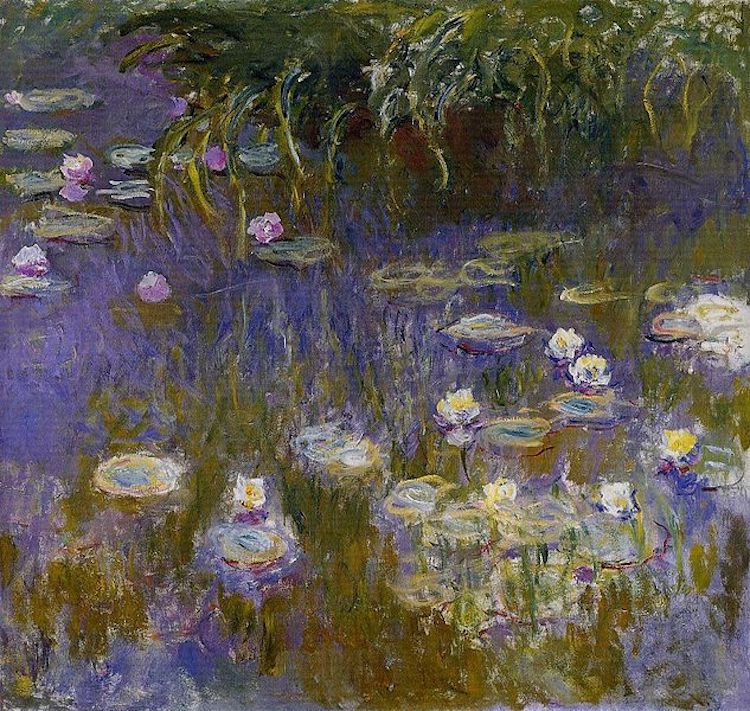
Additionally—much like the artist’s entire body of work—some of these paintings are figurative, while others are much more abstract.
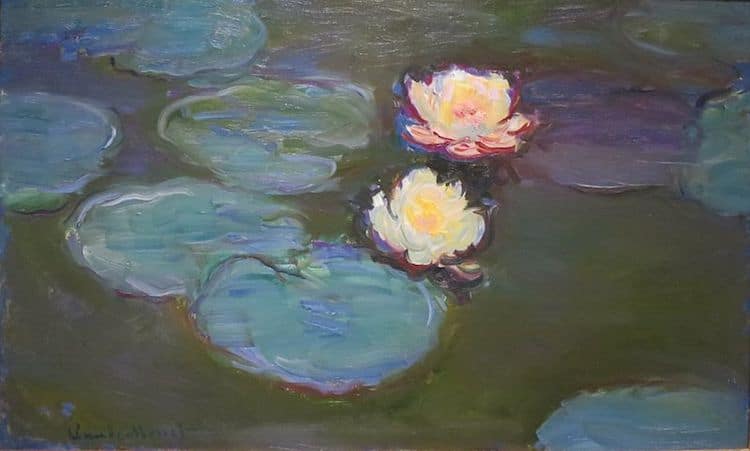

Often, the artist strategically included reflections of trees and clouds on the surface of the water, cleverly creating a sense of depth and offering an unusual glimpse at the rest of his garden.

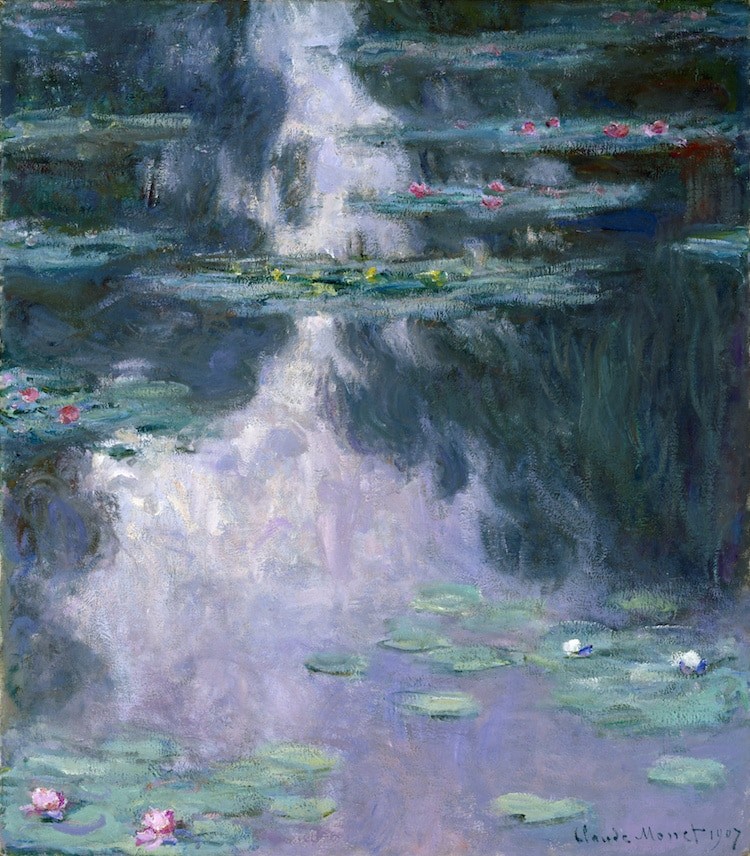
Made up of approximately 250 pieces, this collection was created during the last 30 years of Monet’s life. His last Les Nymphéas paintings were produced in 1926, the year of his death. Compared to his earlier works, his later pieces appear more muddled, darker, and warmer in color—an aesthetic widely believed to be due to the artist’s failing eyesight.
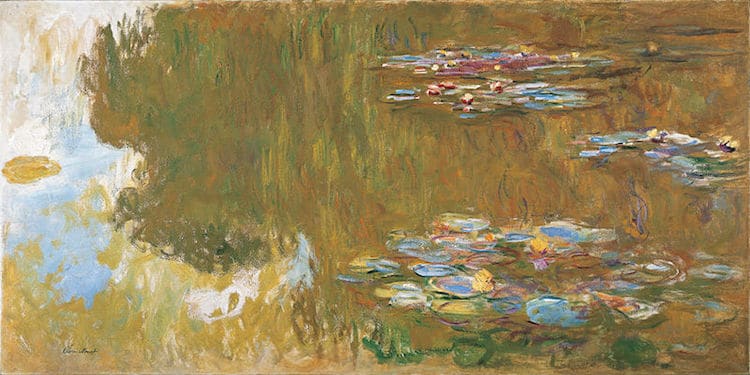
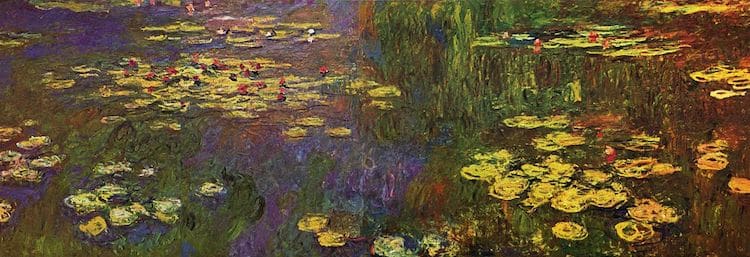
The Legacy of Les Nymphéas
Today, Monet’s Water Lilies can be seen at esteemed sites across the globe. Most famously, they are exhibited on the specially-constructed, curved walls of Musée de l’Orangerie in Paris. “According to Claude Monet’s own suggestion, the eight compositions were set out in the two consecutive oval rooms,” the museum’s website states. “The painter wanted visitors to be able to immerse themselves completely in the painting and to forget about the outside world.”
Additionally, these popular pieces can be found in other world-famous museums, including New York City’s Metropolitan Museum of Art and Museum of Modern Art, the Art Institute of Chicago, the Legion of Honor in San Francisco, and the Musée Marmottan Monet in Paris, which houses the largest collection of work by the artist.
